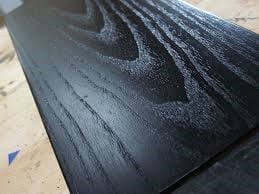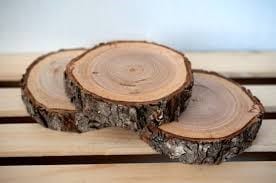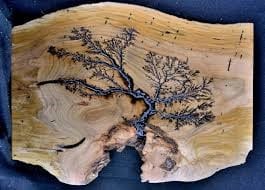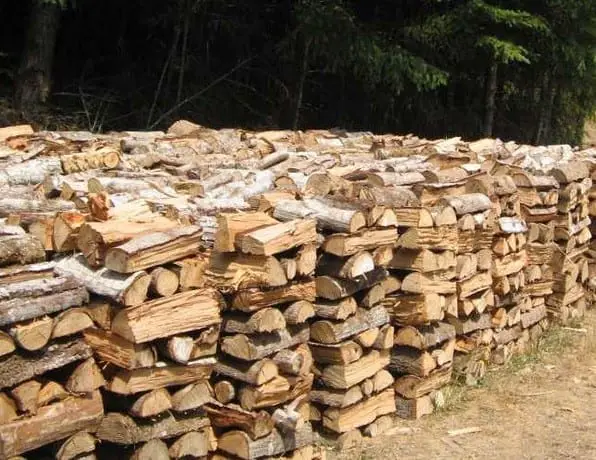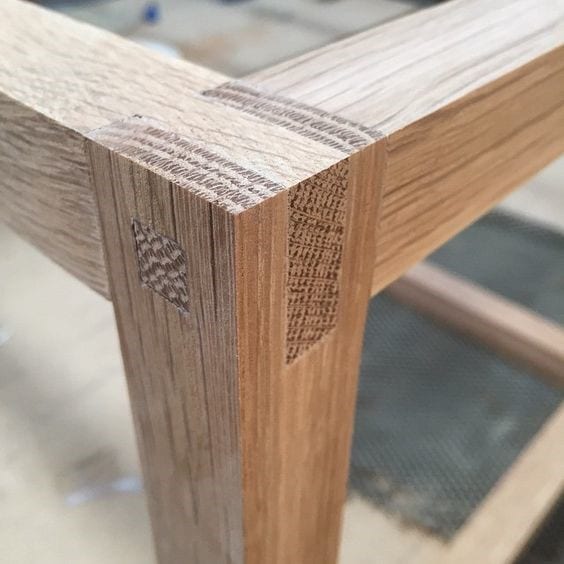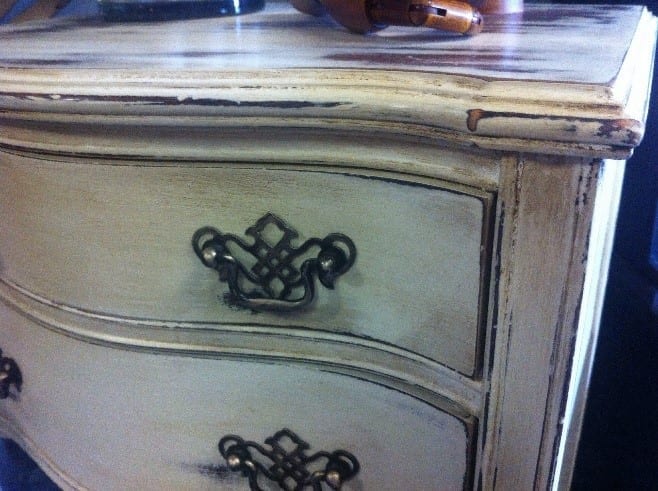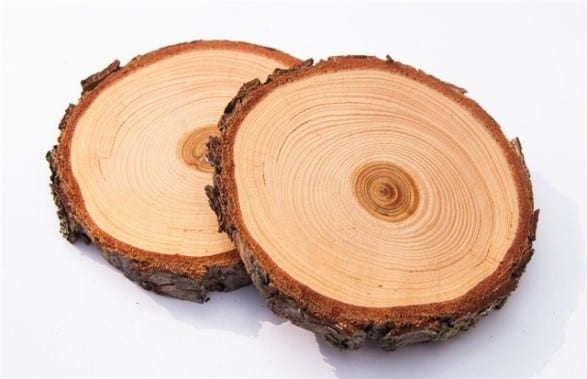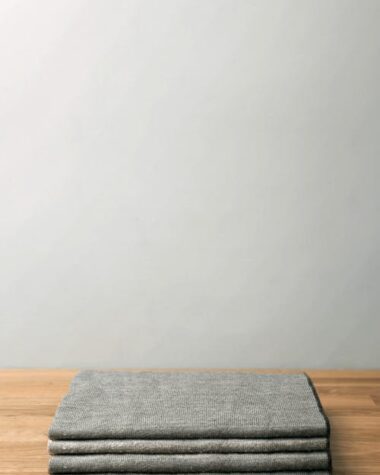Ebony is a priceless material that so beautiful, it’s priceless. The material is ancient. It has been used in statues, trinkets, jewelry pieces and furniture by only the rich, the influential and the most highly decorated people in history.
Because of ebony’s value, woodworkers try to duplicate its form and color. This guide will show you how to make ebony out of ordinary wood.
Ordinary wood to ebony
While applying a dark store-bought dry or strain may be the best way to ebonize wood, the best way to do so is through creating a chemical reaction between iron acetate and tannin. The components for this tutorial include fine grade steel wool dissolved in vinegar to create iron acetate and strong tea for the tannin. Use a less grainy wood to copy ebony’s smooth and luxurious surface.
What you will need
- Fine grit-steel wool (grade #0000)
- 220-grit sandpaper
- Hot water
- Dish soap
- Vinegar or apple cider
- Strong tea
- Glass Jar
- Clean Rag
Steps on how to ebonize wood
1) Creating the staining solution
Clean a piece of fine steel wool (grade #0000) using hot water and dish soap or a household solvent. New steel wool is best. You can also use non-galvanized iron nails or screws. Tear up the steel wool so it’ll break down faster. Fill a glass jar with the steel wool and vinegar or apple cider.
Let the steel wool and vinegar sit for around a week. Create a few small holes on the cover.
Pour the solution through a fine filter. Pour the contents into another non-metal container.
Discard the leftover solids from the solution.
2) Preparing wood
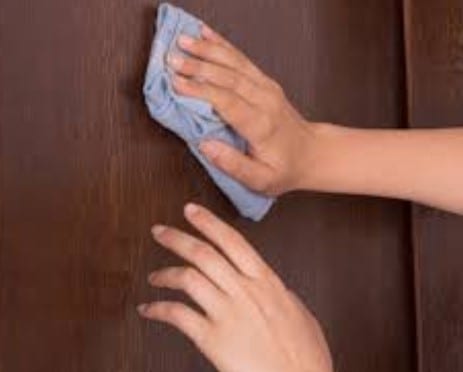
Source: https://www.wikihow.com/Ebonize-Furniture
Select a fine grain wood for a more authentic look. Go with the finest grain wood to mimic ebony’s look. A good example is Northern White Cedar or Hemlock. Complete any routing and machining work on the wood before ebonizing. The staining process will affect the wood’s surface.
Routing, carving, cutting, and other machining will expose untreated layers of wood and will make you start from scratch. Brush water onto the surface and let it dry to raise the grain. Once this is dry, you’ll see tiny, fuzzy whiskers of raised wood.
3) Lightly sand the raised grain using 220-grit sandpaper

Source: https://www.wikihow.com/Wet-Sand-Wood
Raise and sand the grain twice before applying the ebonizing solution.
4) Applying the stain

Source: https://www.pinterest.com/pin/198862139772177900/?lp=true
Brew strong tea that you will use to form a reaction with the iron solution. Strong tea like quebracho bark tea powder should be mixed with a pint of hot water until the tea is completely dissolved. If you cannot find this strong tea, simply use any strong tea or coffee.
Apply the tea to the wood with gentle strokes. Spread out or blot any spots where excess tea begins to pool. Make everything even as possible.
Never leave a pool of excess tea on the surface of the wood because this will prevent the colorizing reaction to penetrate into the wood. Apply the stain with foam or bristle brush.
Let the tea soak for five or ten minutes, but apply the staining solution while it’s still damp. Use light, uniform strokes. Try to look at the surface from multiple angles for even coverage.
Use a different brush to apply the colorizing solution to prevent contamination.
5) Drying your work
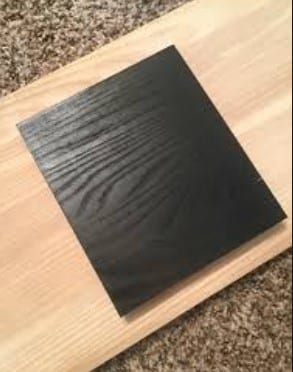
Source: https://www.reddit.com/r/woodworking/comments/7zoh4r/tried_my_hand_at_ebonized_wood_success/
Let the stain dry for a few hours then use a sandpaper to lightly sand. Don’t use hard pressure or make the surface too smooth because the next coat won’t absorb really well. Repeat the application process until you have achieved the right deep color. The number of coats you need to apply may depend on the initial color of your wood.
If you have experienced some chalkiness apply a tea rinse to apply a deeper color. After the last coat has been applied, buff the surface with a clean, dry rag. Apply a final tea rinse to eliminate any chalkiness. This will result in an intense, natural look. Brush the wood with the last tea coat and let it dry completely.
6) Buffing the surface
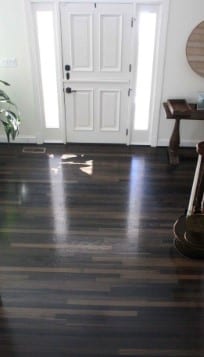
Source: https://www.pinterest.com/pin/35325178306097270/?lp=true
Buff one last time after the tea is dry. The wood must be dry one to two hours after you apply the final tea wash. When it’s completely dry, buff the surface again using a clean rag for a final polish.
Conclusion
Ebonizing wood is an extremely amazing way to improve the appearance of natural wood. Simple everyday materials can be used to ebonize wood. You must also have the patience to work on this project because it can take time to complete.
